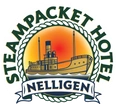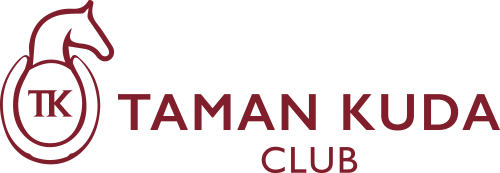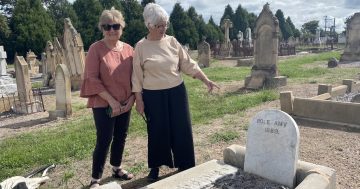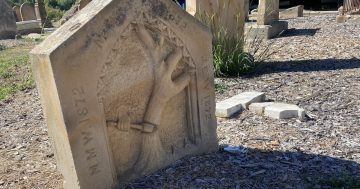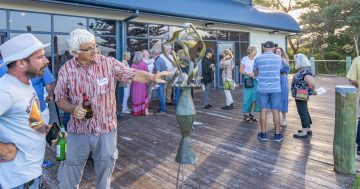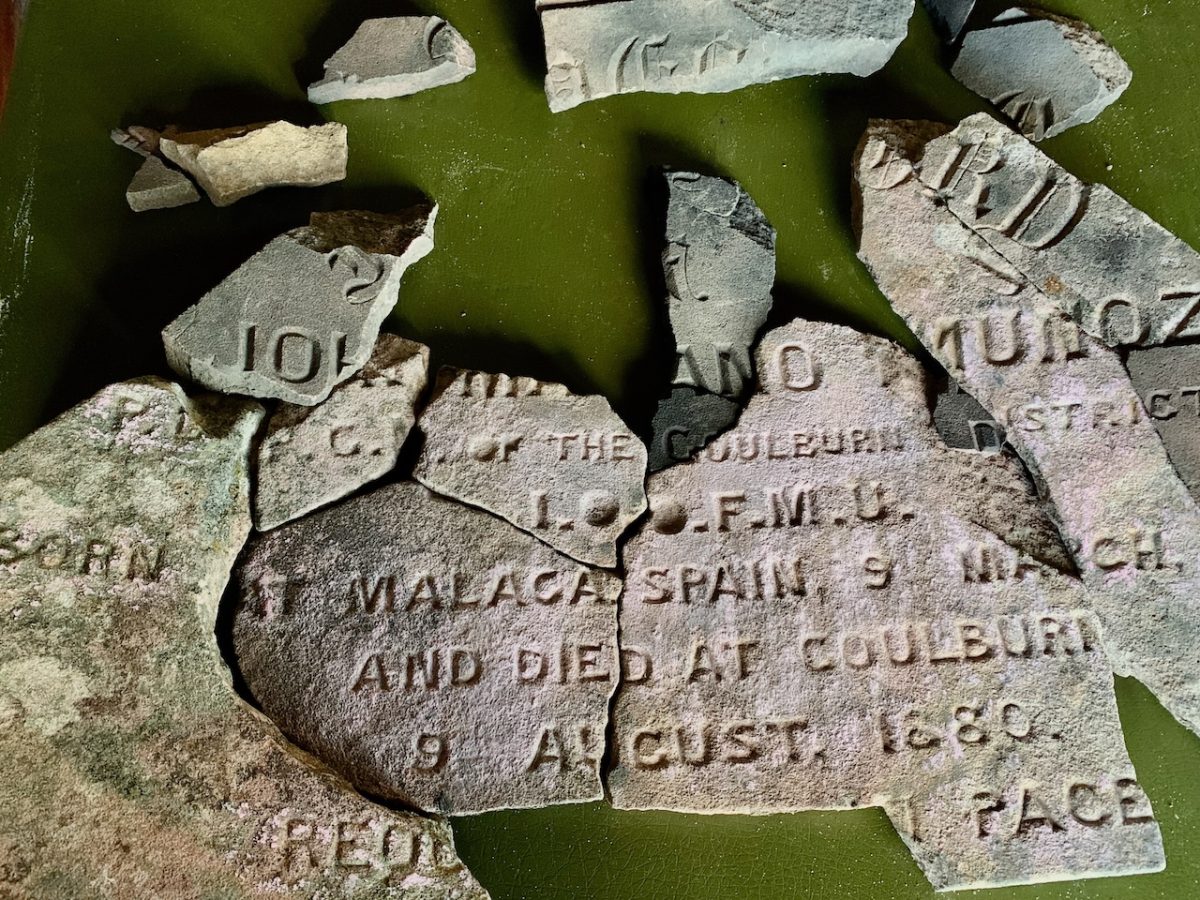
Pieces of the sandstone headstone of John Munoz have been reassembled helping to complete information about the former convict and tailor. Ground subsidence is thought to have caused the large sandstone block to collapse. Photo: Daphne Penalver.
To piece this headstone (above) together is much like assembling missing fragments of Australia’s first inland city, Goulburn.
The broken headstone belongs to Spaniard John (Juan) Mariano Munoz, a convict and creator of a little-known stone quarry, unused but still gaping from its huge hole close to Goulburn’s main shopping centre. Munoz is buried in the Catholic section of the city’s pioneer cemetery in Mortis Street, North Goulburn.
Thanks to a mighty community effort spearheaded by Friends of Goulburn Historic Cemeteries, you can find John Munoz’s grave, and all about him, more easily than ever before.
Reference to his stone quarry came to light when one of the Cemeteries Friends, Linda Cooper, was labelling his grave for records.
That snippet of information set fellow volunteer Daphne Penalver searching for the quarry’s location and more about this businessman, born in 1815 in Alameda, Malaga, in southern Spain.
He had been convicted in Gibraltar (a British colony) and sentenced to seven years’ jail for ‘’aiding and assisting’’. No other details of his offence are recorded. After two years of imprisonment, he was transported to NSW.
Awarded his certificate of freedom in 1842, which meant the 27-year-old was free to leave the colony, he instead remained in Goulburn, where his papers had been signed.
Setting up shop as one of Goulburn’s earliest tailors, he operated from various locations around the main street and rewarded his many skilled staff with high wages.
Twice married, he had three, possibly four, children, including a six-year-old daughter who drowned in Mulwaree Ponds trying to retrieve a kitten from the water.
Winning numerous postal delivery contracts enabled Munoz to engage his two sons to take the mail to Taralga and Tuena via Laggan.
He owned and raced horses and was one of the founding members of the Loyal Strangers Friend Lodge of Oddfellows and was credited for its longevity.
Munoz’s stone quarry was carved into the ground on Church Hill to provide the foundation stone for St Saviour’s Parish Church, foundations for the Catholic chapel on the corner of Bourke and Verner streets, and most of the large buildings in town.
“The quarry is known to anyone who walks along the southern side of Verner Street, just before the crossing with Cowper Street,” Daphne said. “A bright-orange safety fence is now in place drawing attention to the dangerous change of levels.”
Passed on to Munoz’s son Frederick in 1869, the quarry has long been expired and was used as a tennis court in the 1950s.
Munoz died on 9 August, 1880, and members of the Loyal Strangers Lodge paid for a headstone, which was in pieces by the time the Cemeteries Friends came on the scene.
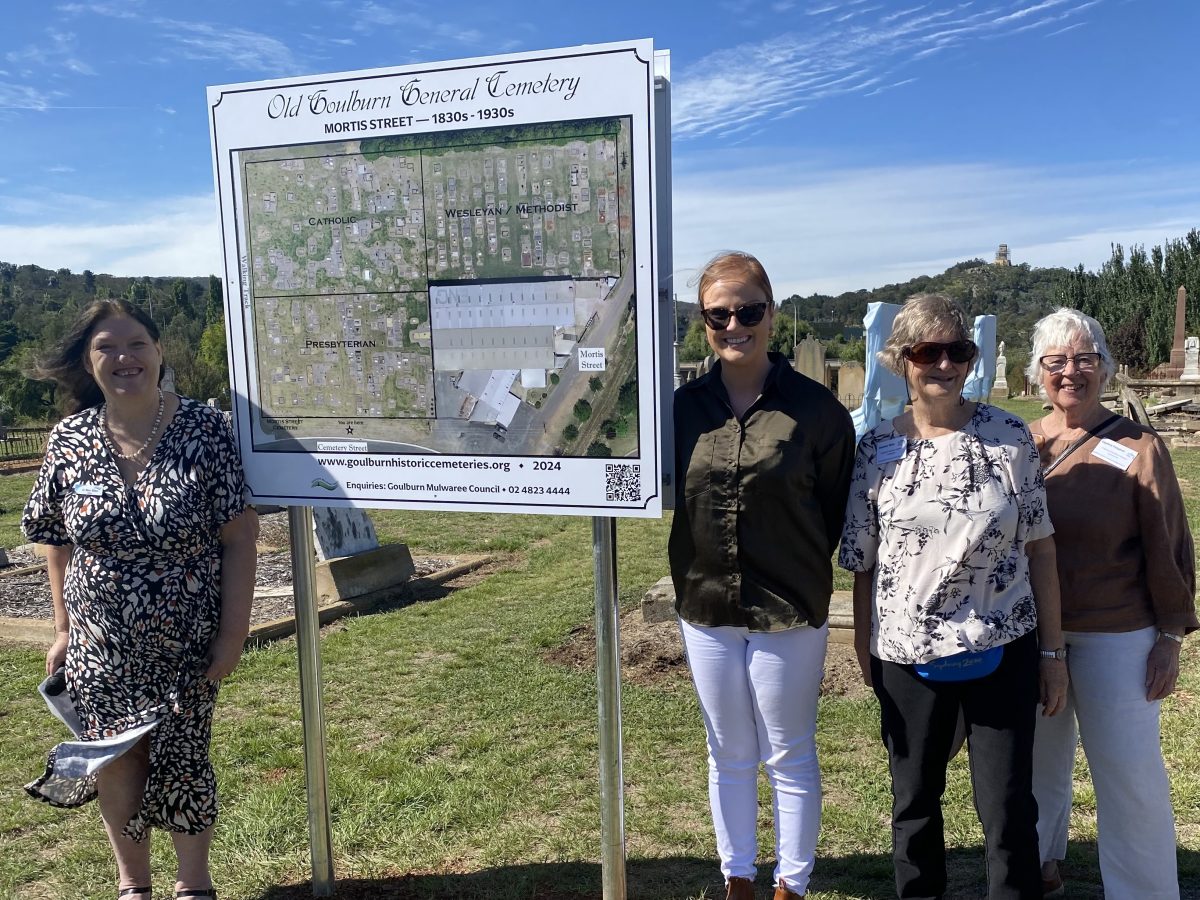
(From left) Mayor Nina Dillon, Deputy Mayor Caitlin Flint and Friends of Goulburn Historic Cemeteries volunteers Heather West and Daphne Penalver unveil one of four new signs at the Mortis Street Cemetery. Photo: John Thistleton.
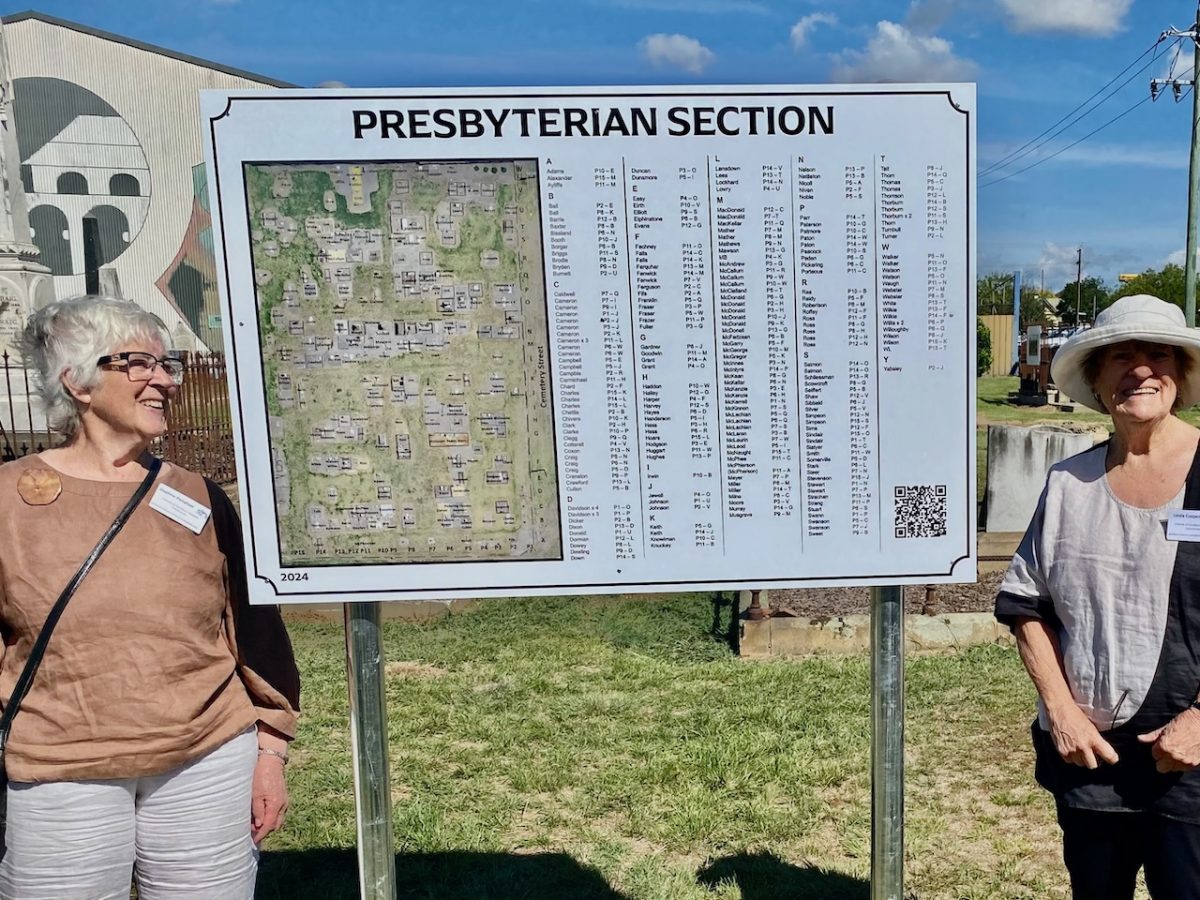
Undertaking the painstaking, critical labelling of graves on maps, Cemeteries Friends researcher Linda Cooper (right) stuck with the task until the end and, with Daphne Penalver, unveiled the signage for Mortis Street Cemetery’s Presbyterian section. Photo: John Thistleton.
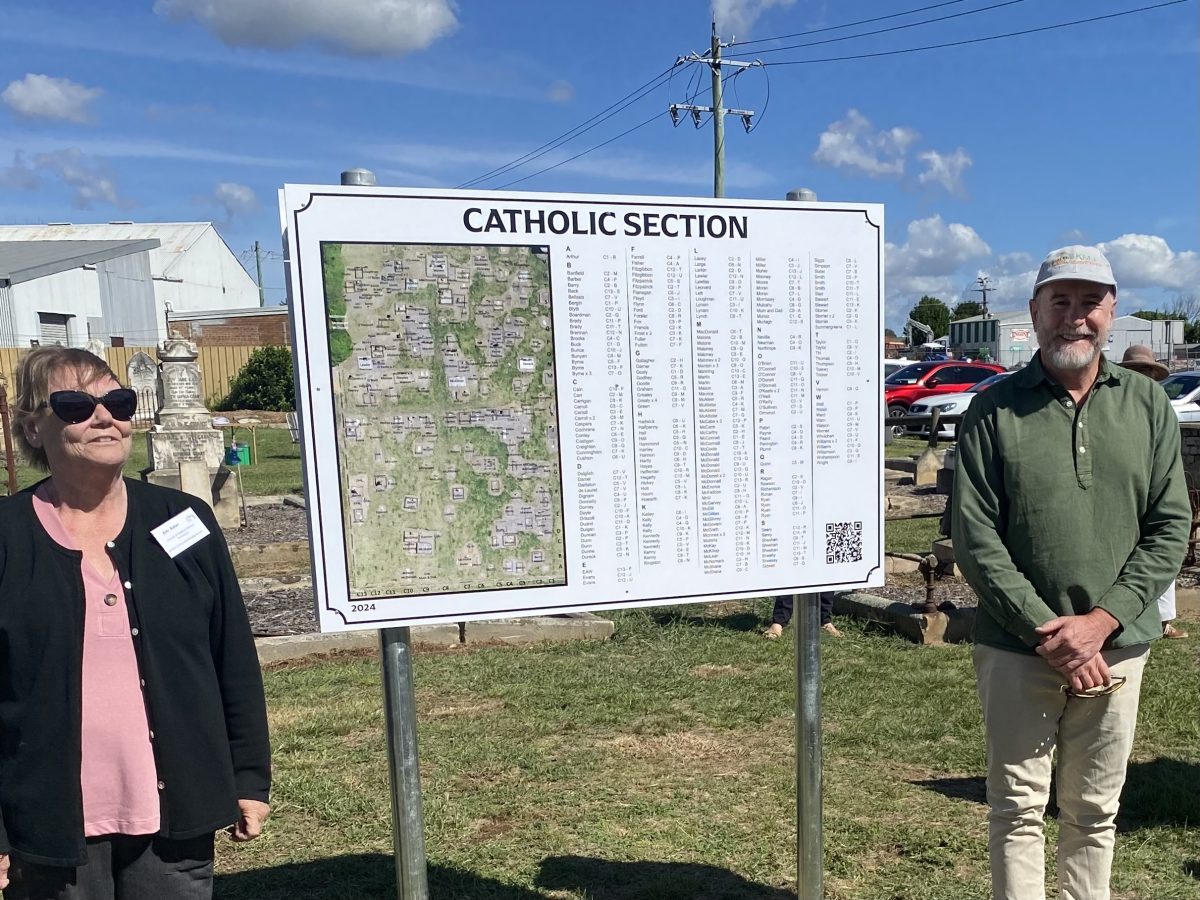
Volunteer Kim Baker and surveyor and aerial photographer Justin Kell unveil the Catholic section’s signage. Three thousand burials are in the entire cemetery, including the grave of the Warn family, a mother and father and two children killed from charcoal fumes near Crookwell. Photo: John Thistleton.
On Saturday morning (15 February), unveiling one of four large maps of the cemeteries, Goulburn Mayor Nina Dillon said the Cemeteries Friends had done a marvellous job and thanked them for their dedication and countless hours of voluntary work.
Created by graphic designer Studio Four using exceptionally clear aerial photographs taken by surveyor Justin Kell, the signs have legends and QR codes linked to a website for GPS to guide visitors to specific graves.
Cemeteries Friends spokeswoman Heather West said the volunteers began their work after leading Goulburn District Historical Society tours in 2018 and being embarrassed by the overgrown state of graves, some of them of prominent people from Goulburn’s past.
Weeding, researching and following National Trust cemetery guidelines dealing with old graves, they have turned the cemetery, and the nearby St Saviour’s Cemetery, into welcoming tourist attractions. Memorials for World War I soldiers killed at Gallipoli and France can also be found at the cemeteries.
Helping the Cemeteries Friends has been author Edith Medway, who did the first guided walking tour. At that time, she had already done research on people interred, and subsequently produced two cemetery booklets, recently updated.
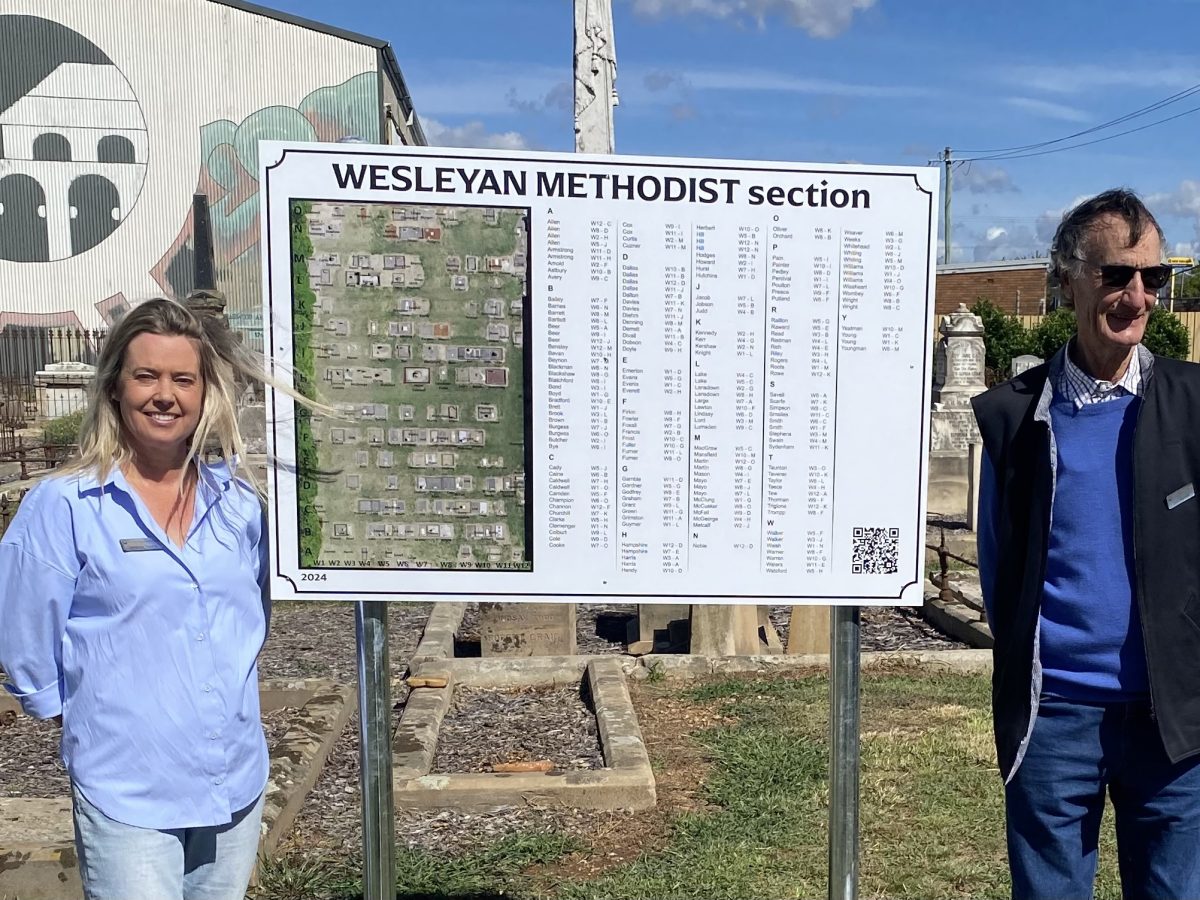
Veolia Trust representatives Vanessa Toparis and John Reynolds unveil the Wesleyan Methodist section. The religious denominations were once separated by paling fences. Photo: John Thistleton.
Descendants of the Durack, Knowlman, Rogers, Allen, Peden, Ryan and Diehm families donated money for the four new signs, as did the Quota, Rotary and Goulburn City Lions clubs, the Uniting Church and Saints Peter and Paul’s Old Cathedral.
Licensed clubs and four Goulburn businesses contributed money, which Veolia Mulwaree Trust matched with a $5000 grant.
More than 50 people attended Saturday morning’s unveiling and witnessed much pride in the pioneer cemetery, Goulburn’s unique history and volunteers who are no longer embarrassed by neglected graves.




